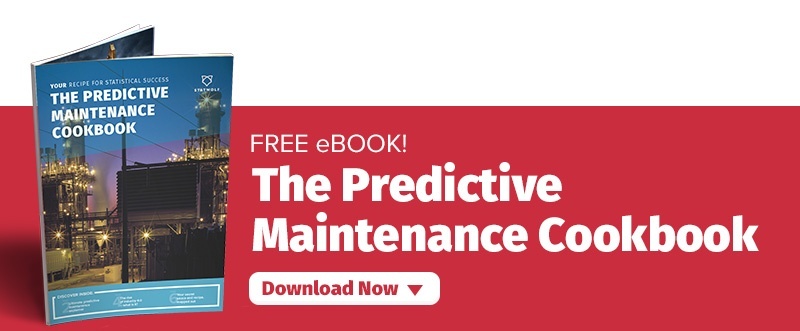Predict Conference 2017: Why Predictive Maintenance is not just a game-changer… but a life-changer
Our CEO, Simone Pampuri, is honoured to speak at this year’s Predict Conference on the topic of “Towards Industry 4.0: The Cookbook for a successful Predictive Maintenance project.” While we won’t spoil his big moment by predicting his speech here (pun intended), we can’t deny the fact that we are hugely excited for the future of Predictive Maintenance.
An area that really highlights the commonality of the two fields of data and artificial intelligence, Predictive Maintenance has incredible potential to change the way businesses are run.
Sure, we know Predictive Maintenance isn’t the most glamorous side of technology: You don’t get glitzy celebrity-endorsed iPhone-style launches for getting a factory to run 12 percent more efficiently. Neither do you get column inches for preventing a potentially fatal accident by replacing a worn-down part before it starts to compromise the running of a piece of heavy machinery.
That disparity is highlighted in an article in the New York Times recently, which said we now live in an era where, “innovation is exalted, maintenance devalued”.
Time times they are a changin’… maybe
But things might just be about to change. According to the founders of the Predict Conference, the two most heavily invested start-up areas are data and artificial intelligence. Venture capitalists aren’t exactly known for wasting cash – so it’s not a stretch to say that they are two of the hottest areas in tech right now.
But at Statwolf, we are less concerned with the flavour of the month, and we’re all about where data and artificial intelligence meet – and what that will mean for business.
Predictive maintenance is not new. Back in the early 1990s there were articles with headlines like “Technology: Heeding the Screams of Sick Machines.” But the reason why it’s having a moment right now is because it is married to the idea of data analytics.
At last year’s Predict Conference, Creme Global’s Cronan McNamara said, “if you’re not dealing with the data scientifically you’re not doing data science, you are doing something else. It’s about applying scientific methods to data and being rigorous.”
Statwolf’s data science team emphatically agrees with that. Predictive maintenance is not about simply installing an out-of-the-box piece of software and hey presto: your machines won’t break down any more.
Instead, it’s a process. That title from the mid-90s newspaper article is actually closer to the money than you might think. What predictive maintenance does, in a nutshell, is analyse the data coming from machinery – which is extracted from data-emitting sensors; maintenance data that the machine itself produces; data the maintenance team produces and historical modelling information programmed in at the start of the process.
This data is then identified and potential weak points are highlighted. Maintenance can then be carried out before a catastrophe can happen.
Where Predictive Maintenance can make a real difference
According to McKinsey, Predictive Maintenance in factories could reduce maintenance costs by 10 to 40 percent by fostering better maintenance. It also reduces downtime by 50 percent, and lowers equipment and capital investment by 3 to 5 percent by extending machine life. These figures are significant when you factor in the costs of purchasing the heavy machinery that modern economies demand.
But there is another, perhaps more important area where Predictive Maintenance can make a real difference. The four most common causes of death in the US today are heart disease, cancer, chronic respiratory disease and stroke. The US government does a better job of collating this data than any other authority, so the assumption can be made that the figures are at least fairly representative of the rest of the world. Well, then what’s the fifth biggest killer? Accidents – of which a large part are due to mechanical failure.
What Predictive Maintenance can show us is that there is no unforeseeable reason for a mechanical failure. It allows you to get beyond the ‘it’s just one of those things’ answers for why faults happen.
Instead, asking the correct questions of data should predict the majority of breakdowns, particularly the cataclysmic ones. And that’s not just a potential game-changer – it’s a potential life-changer.
Do you want to use machine learning to save your expensive machinery?If you want to harness the power of artificial intelligence in your business, Statwolf’s data science service can help, with advanced online data visualisation and analysis simply running in your web browser.
We offer a range of custom services to suit your needs: advanced data analysis and modelling, custom algorithm creation and implementation with a particular focus on Predictive Maintenance.
We’ve helped a host of clients get the most out of their data. Are you going to be next? We don’t just deal in data analytics; we offer data solutions.
Want to make sense of your data? Download our comprehensive guide: The Pedictive Maintenance Cookbook.



